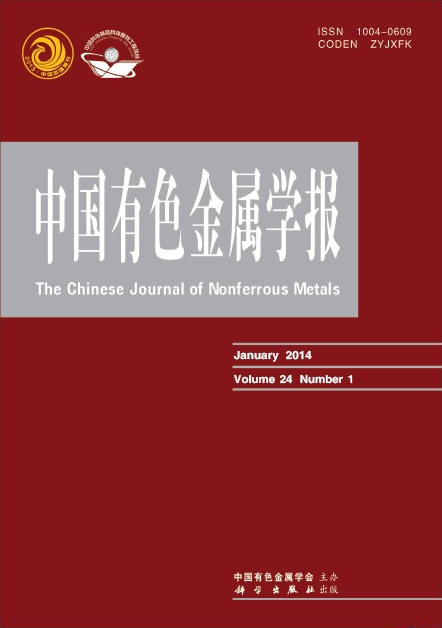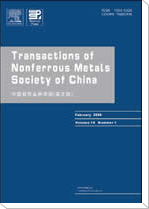中国有色金属学报(英文版)
Transactions of Nonferrous Metals Society of China
| Vol. 35 No. 8 August 2025 |
(1. School of Materials Science and Engineering, Anhui University of Science and Technology, Huainan 232001, China;
2. Department of Mechanical Engineering and Materials Science, University of Pittsburgh, Pittsburgh 15261, USA;
3. School of Mechanical Engineering, Anhui University of Science and Technology, Huainan 232001, China)
Abstract:The phase equilibria of the Cu-Zr-Si system at 600 °C were experimentally studied by means of X-ray diffraction (XRD) and scanning electron microscopy with energy dispersive X-ray spectroscopy (SEM-EDS). A comprehensive set of thermodynamic parameters for the Cu-Zr-Si system were obtained through detailed analysis using the CALPHAD (CALculation of PHAse Diagrams) approach. Based on the CALPHAD calculations, five as-cast alloys were designed, and the Scheil-Gulliver model was used to simulate their solidification paths. By testing hardness, friction and wear properties, the wear resistance of the Cu-Zr-Si alloys was investigated. Wear morphologies were analyzed using SEM and 3D profiling techniques. It was found that the alloy Cu80Zr19Si1 exhibits a good performance with a hardness of HV 342, frictional coefficient of 0.23 and wear rate of 2.19′10-7 mm3/(N·m). The wear surfaces are mainly characterized by grooves, spalling pits and oxide particles. The wear mechanism of the alloys is adhesive wear and oxidative wear under dry sliding condition. This study provides a theoretical basis for the design of the wear-resistant Cu-Zr-Si alloys.
Key words: Cu-Zr-Si alloy; thermodynamic modeling; CALPHAD approach; friction coefficient; wear mechanism


